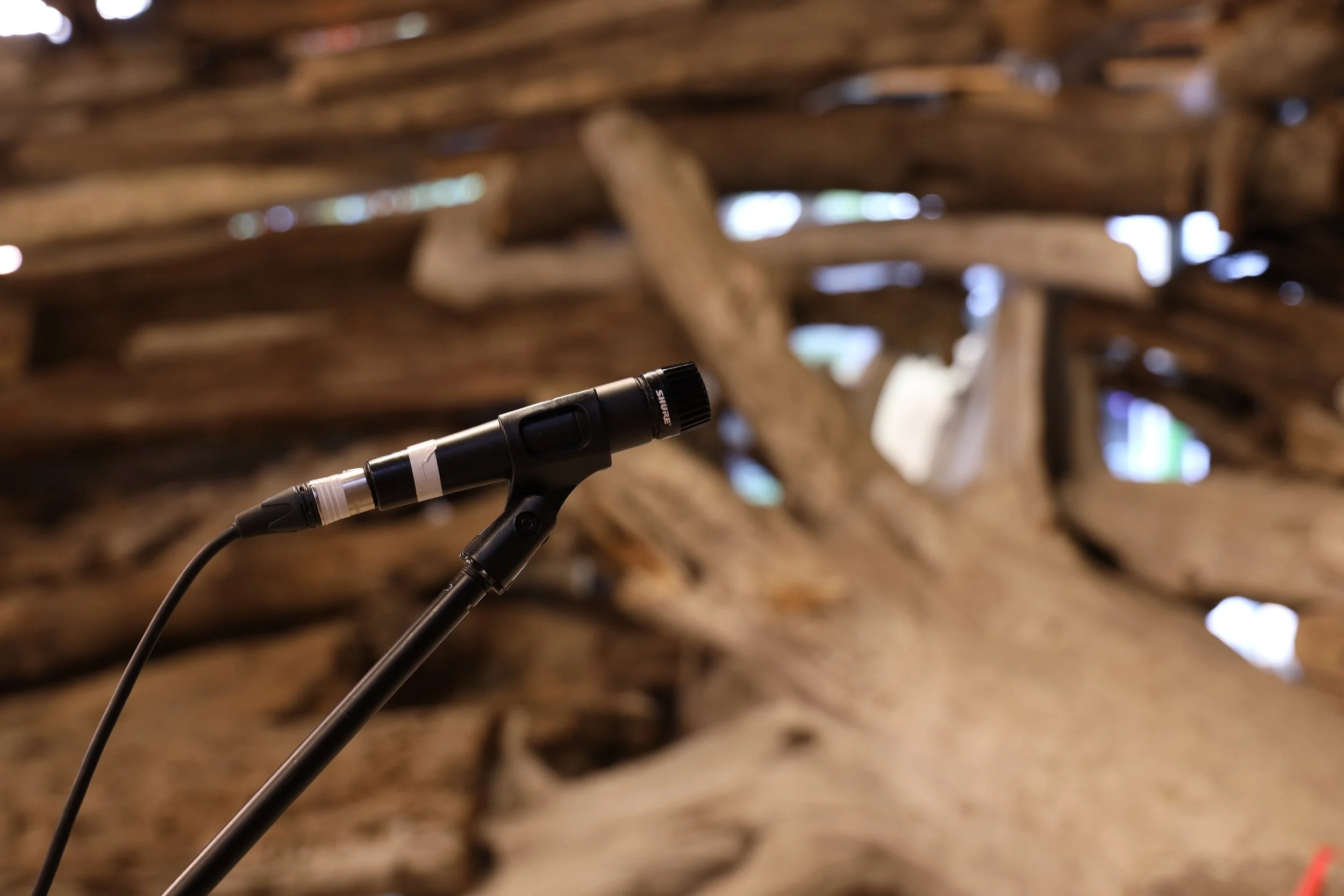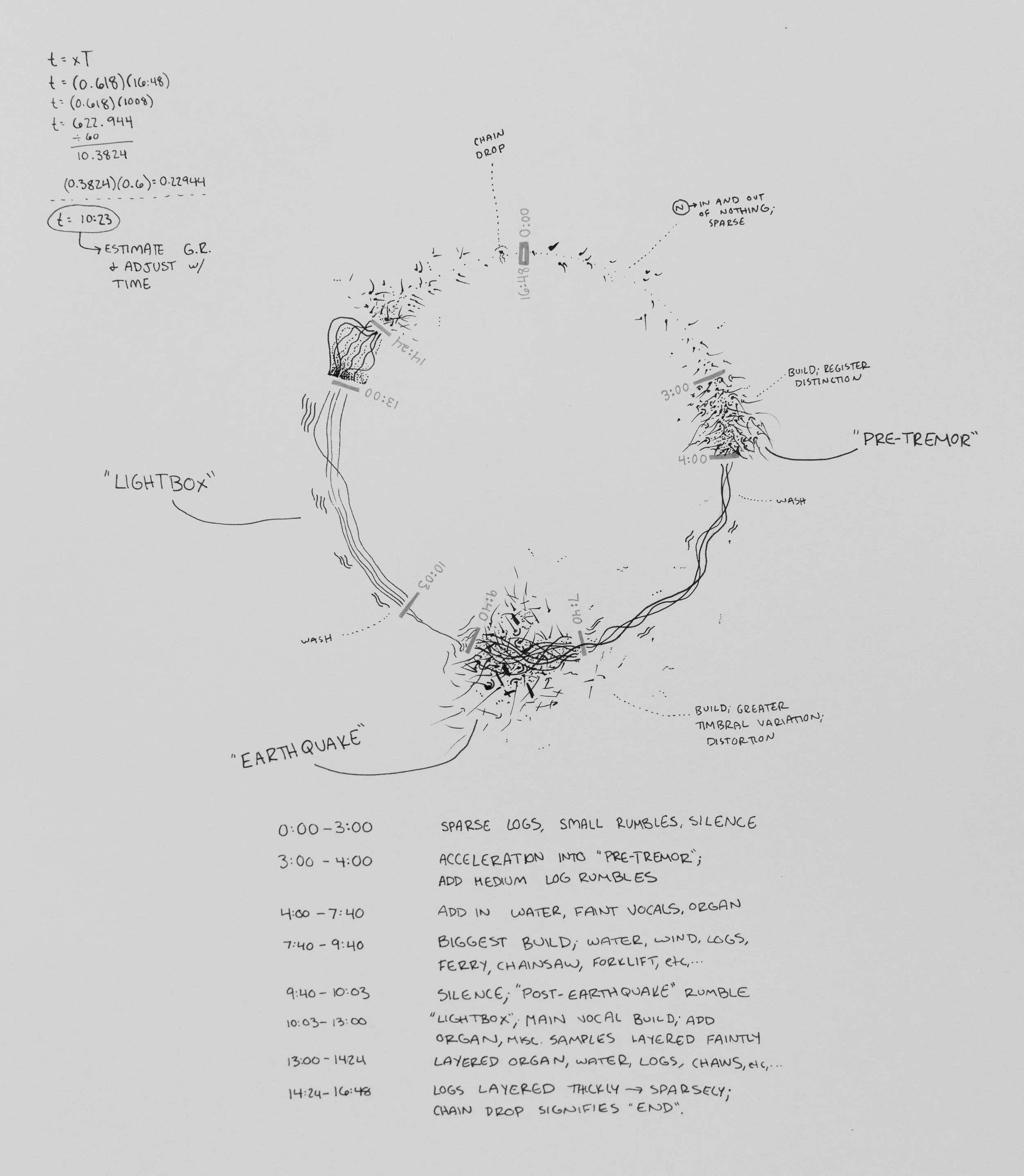
SALVAGE
in collaboration with RACHAEL FASANO
October 4 - November 23, 2023 | MadArt Studios
EXHIBITION PERIOD:
EXHIBITION VIDEO
ABOUT THE INSTALLATION
statement from MadArt Studios
Seattle-based artist Alison Stigora drew inspiration from materials in the natural world to create SALVAGE, a two-part, monumental sculptural installation at MadArt Studio. By combining reclaimed driftwood with light and sound compositions that reflected natural phenomena, Stigora invited visitors to engage their senses in a moment of respite.
Upon entering the studio, viewers were met by a floor-to-ceiling curving wave constructed from pieces of discarded driftwood recently recovered from Puget Sound. The logs were weighty, some nearly the size of whole trees. They combined to form a mass that appeared to be carried along a powerful current. This sculptural form acted as a spatial divider, concealing what lay audibly beyond the visual shield it created. As visitors circumvented the wood barrier and moved deeper into the space, they encountered a large, soft, translucent sculpture that glowed with the colors of a warm sunrise. Built directly off of the studio’s architectural skylight and extending to the floor, this piece created an inhabitable light well that subtly transitioned through a luminous, colorful sequence.
Both sculptural aspects included a unique audio composition made in collaboration with Rachael Fasano, an emerging Seattle-based composer. A low, resonant frequency played an earth-bound track compiled from recordings of wind, water, and equipment used in the retrieval of exhibition materials. This sound, which was felt more than it was heard, rumbled from seating built directly into the interior side of the driftwood sculpture. Emanating from the translucent light piece was a contrasting chorus of looping vocals and celestial organ sounds, paired alongside moments of stillness.
The driftwood used to construct SALVAGE was graciously donated by the Army Corps of Engineers’ M/V Puget, a recovery vessel for retrieving dangerous debris from our region’s waterways. This mission became central to Stigora’s creative intentions. By offering space for contemplation and reflection, she hoped that SALVAGE would provide visitors with an opportunity for reflection, and to note what sorts of obstructions might exist on a personal or communal level. Akin to reshaping cast-off sources of detritus into something beautiful, Stigora posed the question: how can we embrace areas of resistance and positively see them as a space for transformation?
AUDIO COMPONENT
by Rachael Fasano
The audio component of SALVAGE is entirely made of samples—most of which were collected throughout the exhibition process. These sounds included driftwood and the retrieval vessels used to collect it, ferries, the ocean, waterfalls, wind, and other naturally occurring sounds that were later manipulated and layered to create new textures. We additionally sampled an organ from a local church to contribute to the tethered rumbling amplified through subwoofers and embedded deep within the sculpture itself. I worked closely with Alison to form a structure that would guide viewers through the experience and facilitate reflection on themes of blockage and renewal. I ended up composing the piece in the shape of a circle so that it could seamlessly flow for hours on end.
The audio component was uniquely site-specific in response to the physical aspects of the installation and its environment. The massive amount of logs utilized gave us the perfect opportunity to capture percussive sounds through audience participation as the sculpture was being built. I guided a group of local art students and passersby in a recording session to discover and capture a wide variety of sounds these logs could make.
There was a high turnover of city buses passing by throughout each day that created a deep rumbling sensation throughout one’s body. During the fabrication process, we realized how perfectly this could intertwine with the rumbling built into the composition itself, and also added an element of unpredictability to the audience’s experience at any given moment.
This was my first experience manipulating recorded sound in a directional manner. The majority of sound came from speakers and subwoofers embedded deep within the logs and evoked a deep tie to the earth. We also rigged a speaker in the skylight of the lightbox, evoking a quasi-celestial atmosphere and a sense of distinction from the earth.

